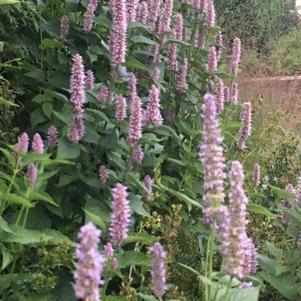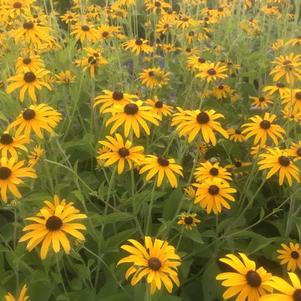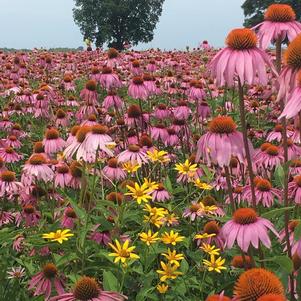« Previous Plant | Next Plant »
Rudbeckia hirta
Black-Eyed Susan
Rudbeckia hirta is a short-lived perennial/biennial found throughout mesic to dry meadows, forests, and anthropogenic habitats. When in full sun, Rudbeckia hirta quickly matures, allowing the plant to self-seed and continue to colonize. In meadow habitats this is a sucessional species, eventually giving way to other long-lived perennials. Rudbeckia hirta is a great plant for prairie restorations and first-year wildflower gardens due to its ability to naturalize with its beautiful display of yellow flowers. The yellow-ray and dark disk flowers of Rudbeckia hirta attract a wide array of pollinators. It is the larval host plant of the Silvery Checkerspot butterfly and attracts a specialist Mining bee. Numerous seeds provide food for overwintering songbirds, such as the goldfinch.
- » Biennial
- » Self-seeding
- » Host plant of the Silvery checkerspot butterfly
- » Attracts native bees





Rudbeckia hirta is a short-lived perennial/biennial found throughout mesic to dry meadows, forests, and anthropogenic habitats. When in full sun, it quickly matures, allowing the plant to self-seed and continue to colonize. Over time, it will give way to long-lived perennials. Rudbeckia hirta is a great plant for prairie restorations and first-year wildflower gardens due to its ability to naturalize and its beautiful display of flowers. Their yellow-ray and dark disk flowers attract a wide array of pollinators. It is the larval host plant of the Silvery Checkerspot butterfly and attracts a specialist Mining bee. Over the winter, their seeds provide food for songbirds, such as the goldfinch.